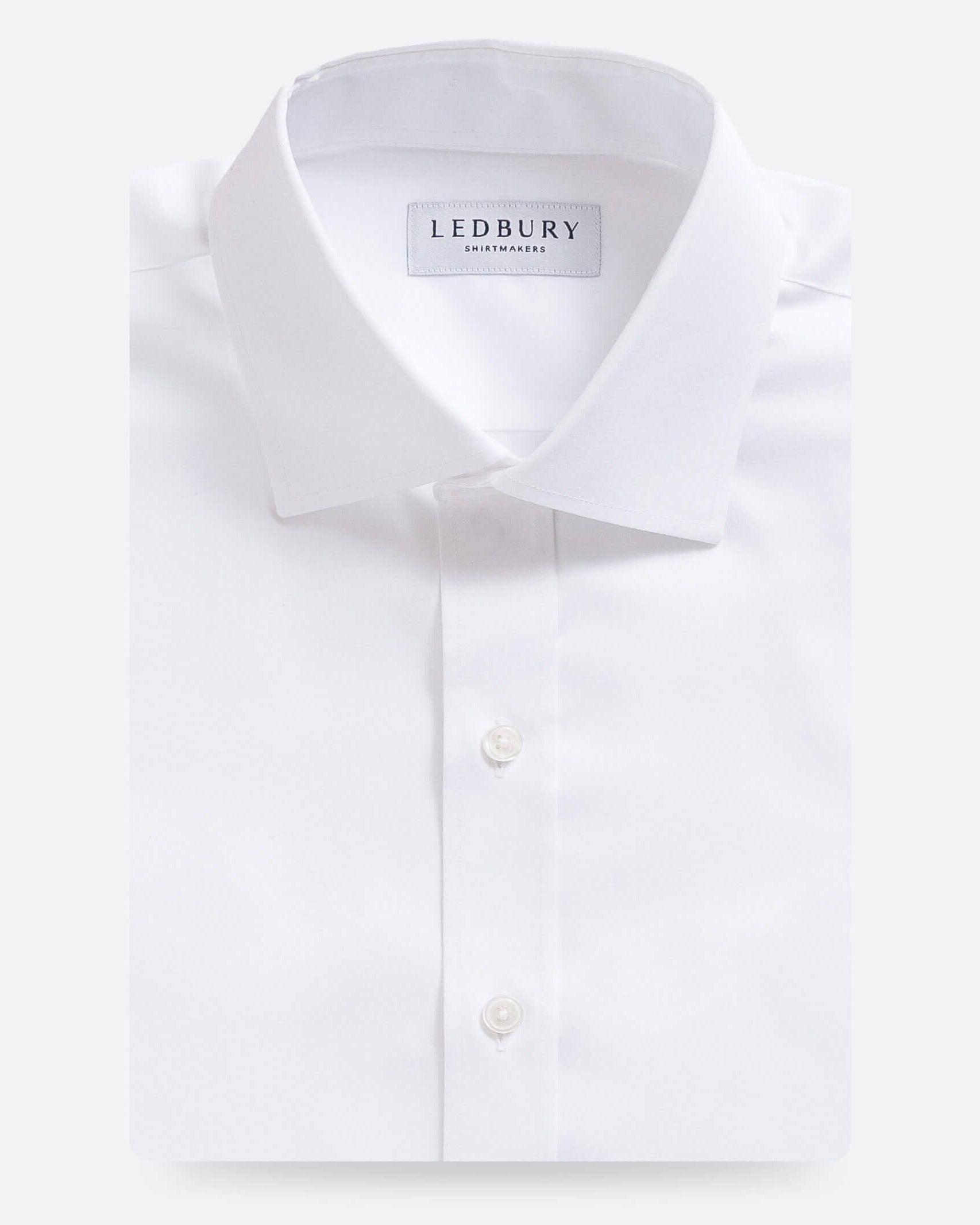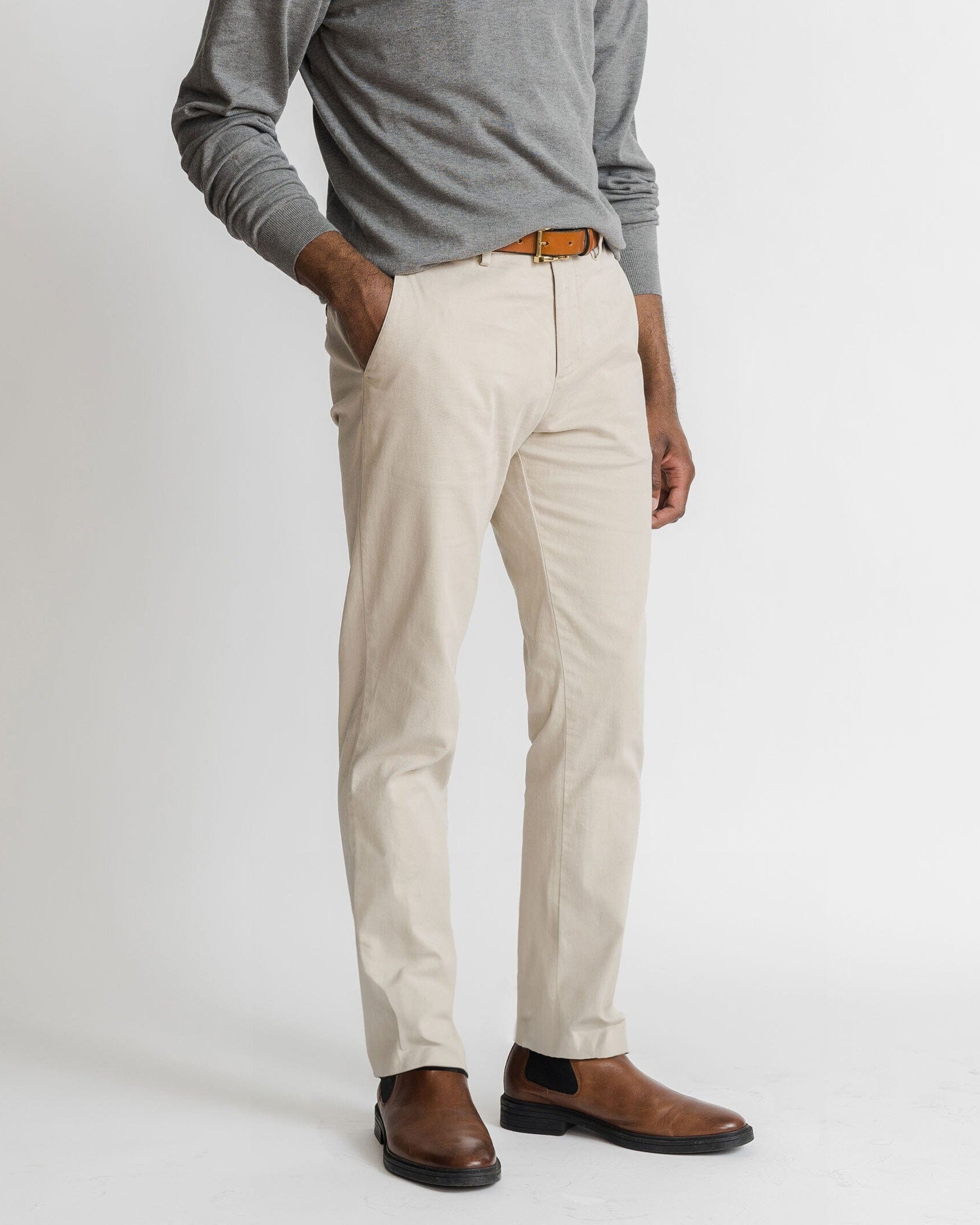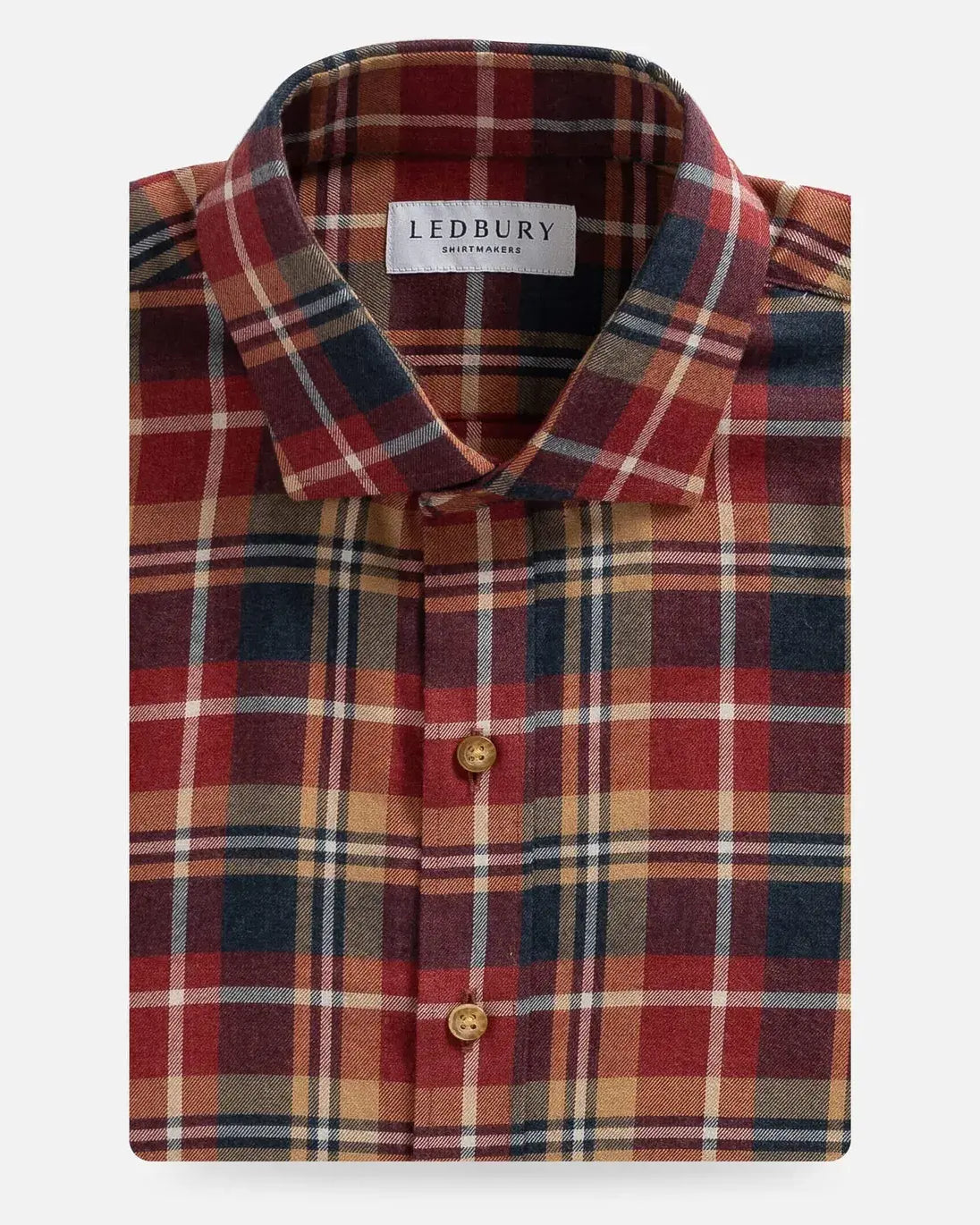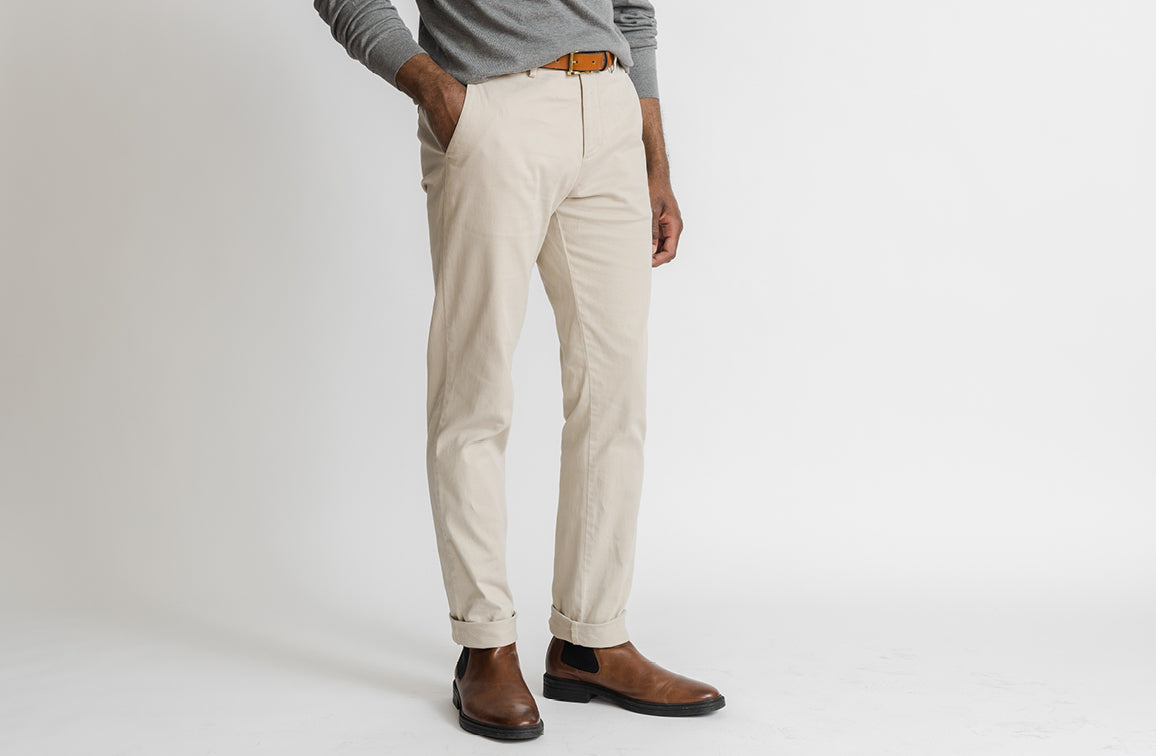




There are several fabrics and patterns essential to a cool weather wardrobe. When it comes to scarves and winter accessories, tartans and plaids are a couple of them. Although the two are commonly thought of as one and the same, tartans and plaids are entirely different. For some clarity, we decided to look into the history of the two and clear the air on what makes a “tartan” a tartan and a “plaid” a plaid.
Knowing the distinction between the two terms is a matter of understanding tradition and taking a crash course in etymology. Tartan as we know it today dates back to 16th century Scotland and is defined as: “A pattern of interlocking stripes with varying widths and colors that run vertically and horizontally against a solid background.” On the other hand, “plaid” comes from the Gaelic word for blanket or a large piece of fabric. Within the realm of Scottish Highland dress, a plaid is the piece of fabric that is traditionally worn over the shoulder and under the opposite arm of the wearer. The kilt was originally known as a “belted plaid” and consisted of a large piece of fabric gathered and belted at the waist. Belted plaids were often made from tartan cloths, leading to the understandable confusion between the two terms. In short, tartan is a pattern, and plaid is a garment – at least according to Highland standards.
Until the nineteenth century, Highland tartans were only associated with districts or regions, rather than specific Scottish clans. This was because tartan weavers relied on local tastes and the natural dyes that were available to them to determine design. There is some debate on how the tradition of official clan tartans came to be. One leading theory occurred in 1822 when King George IV visited Edinburgh, Scotland and requested that all clan chiefs greet the King in their “proper” clan tartan. According to lore, many of the chiefs had no idea what their tartan might be, but complied and selected “official” tartans for the occasion. Coincidentally the exercise of staking a specific tartan stuck and is a continued practice today. Today, it isn’t uncommon for Scottish clans to have several tartans attributed to their name.
If you are living in the United States and were under the impression that all tartans are plaids, but not all plaids are tartans, you’d be correct. In North America, tartans are always associated with a particular Scottish clan, and “plaid” is used as a general catchall term for patterns of checkered twilled cloth. If you find yourself in Scotland, make sure to call all checkered twilled cloth that you encounter a tartan in order to blend in with the locals . . . if your accent hasn’t already given you away.
The weaving of tartans and plaids represent a rich history of Scottish tradition that has taken centuries to perfect. We’ve always held the belief that to produce the best, you have to go to the best. Our winter scarves are woolen and produced in Scotland from a range of luxurious fibers including cashmere, merino and angora wools. These are guaranteed to help keep you warm through the winter, regardless of your choice of tartan or plaid.
Shop our complete collection of winter accessories
now.




 There are several fabrics and patterns essential to a cool weather wardrobe. When it comes to scarves and winter accessories, tartans and plaids are a couple of them. Although the two are commonly thought of as one and the same, tartans and plaids are entirely different. For some clarity, we decided to look into the history of the two and clear the air on what makes a “tartan” a tartan and a “plaid” a plaid.
Knowing the distinction between the two terms is a matter of understanding tradition and taking a crash course in etymology. Tartan as we know it today dates back to 16th century Scotland and is defined as: “A pattern of interlocking stripes with varying widths and colors that run vertically and horizontally against a solid background.” On the other hand, “plaid” comes from the Gaelic word for blanket or a large piece of fabric. Within the realm of Scottish Highland dress, a plaid is the piece of fabric that is traditionally worn over the shoulder and under the opposite arm of the wearer. The kilt was originally known as a “belted plaid” and consisted of a large piece of fabric gathered and belted at the waist. Belted plaids were often made from tartan cloths, leading to the understandable confusion between the two terms. In short, tartan is a pattern, and plaid is a garment – at least according to Highland standards.
Until the nineteenth century, Highland tartans were only associated with districts or regions, rather than specific Scottish clans. This was because tartan weavers relied on local tastes and the natural dyes that were available to them to determine design. There is some debate on how the tradition of official clan tartans came to be. One leading theory occurred in 1822 when King George IV visited Edinburgh, Scotland and requested that all clan chiefs greet the King in their “proper” clan tartan. According to lore, many of the chiefs had no idea what their tartan might be, but complied and selected “official” tartans for the occasion. Coincidentally the exercise of staking a specific tartan stuck and is a continued practice today. Today, it isn’t uncommon for Scottish clans to have several tartans attributed to their name.
If you are living in the United States and were under the impression that all tartans are plaids, but not all plaids are tartans, you’d be correct. In North America, tartans are always associated with a particular Scottish clan, and “plaid” is used as a general catchall term for patterns of checkered twilled cloth. If you find yourself in Scotland, make sure to call all checkered twilled cloth that you encounter a tartan in order to blend in with the locals . . . if your accent hasn’t already given you away.
The weaving of tartans and plaids represent a rich history of Scottish tradition that has taken centuries to perfect. We’ve always held the belief that to produce the best, you have to go to the best. Our winter scarves are woolen and produced in Scotland from a range of luxurious fibers including cashmere, merino and angora wools. These are guaranteed to help keep you warm through the winter, regardless of your choice of tartan or plaid.
Shop our complete collection of winter accessories now.
There are several fabrics and patterns essential to a cool weather wardrobe. When it comes to scarves and winter accessories, tartans and plaids are a couple of them. Although the two are commonly thought of as one and the same, tartans and plaids are entirely different. For some clarity, we decided to look into the history of the two and clear the air on what makes a “tartan” a tartan and a “plaid” a plaid.
Knowing the distinction between the two terms is a matter of understanding tradition and taking a crash course in etymology. Tartan as we know it today dates back to 16th century Scotland and is defined as: “A pattern of interlocking stripes with varying widths and colors that run vertically and horizontally against a solid background.” On the other hand, “plaid” comes from the Gaelic word for blanket or a large piece of fabric. Within the realm of Scottish Highland dress, a plaid is the piece of fabric that is traditionally worn over the shoulder and under the opposite arm of the wearer. The kilt was originally known as a “belted plaid” and consisted of a large piece of fabric gathered and belted at the waist. Belted plaids were often made from tartan cloths, leading to the understandable confusion between the two terms. In short, tartan is a pattern, and plaid is a garment – at least according to Highland standards.
Until the nineteenth century, Highland tartans were only associated with districts or regions, rather than specific Scottish clans. This was because tartan weavers relied on local tastes and the natural dyes that were available to them to determine design. There is some debate on how the tradition of official clan tartans came to be. One leading theory occurred in 1822 when King George IV visited Edinburgh, Scotland and requested that all clan chiefs greet the King in their “proper” clan tartan. According to lore, many of the chiefs had no idea what their tartan might be, but complied and selected “official” tartans for the occasion. Coincidentally the exercise of staking a specific tartan stuck and is a continued practice today. Today, it isn’t uncommon for Scottish clans to have several tartans attributed to their name.
If you are living in the United States and were under the impression that all tartans are plaids, but not all plaids are tartans, you’d be correct. In North America, tartans are always associated with a particular Scottish clan, and “plaid” is used as a general catchall term for patterns of checkered twilled cloth. If you find yourself in Scotland, make sure to call all checkered twilled cloth that you encounter a tartan in order to blend in with the locals . . . if your accent hasn’t already given you away.
The weaving of tartans and plaids represent a rich history of Scottish tradition that has taken centuries to perfect. We’ve always held the belief that to produce the best, you have to go to the best. Our winter scarves are woolen and produced in Scotland from a range of luxurious fibers including cashmere, merino and angora wools. These are guaranteed to help keep you warm through the winter, regardless of your choice of tartan or plaid.
Shop our complete collection of winter accessories now.











